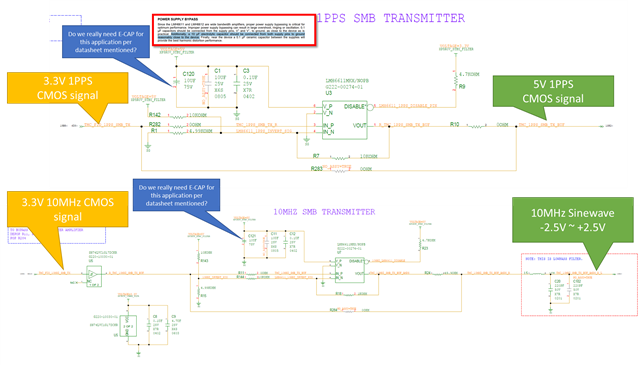Tool/software:
Hello TI Support Team,
I am using the LMH6611 in my design and have a question regarding the power supply bypassing recommendations.
My application involves conditioning a 1PPS 5V CMOS and a 10MHz sine wave -2.5V~2.5V signal.
The datasheet's "POWER SUPPLY BYPASS" section on page 23 recommends using a 10 µF electrolytic capacitor.
Since my application is not for audio, could you clarify if this 10 µF electrolytic capacitor is still critical for stability and performance?
We are trying to save board space and would prefer to use an MLCC to replace E-capacitor solution if possible.
Perhaps i can enable 47uF with higher voltage rating MLCC to replace 10 µF electrolytic capacitor.
I have attached our schematic for your review. Thank you for your assistance.



